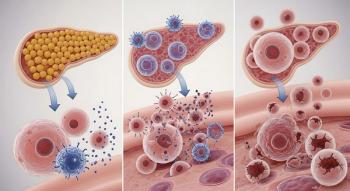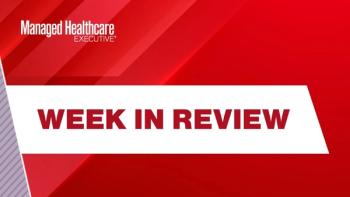
- MHE November 2025
- Volume 35
- Issue 11
Selling Direct
Key Takeaways
- Direct-to-consumer drug sales aim to simplify pricing and increase transparency by allowing patients to buy directly from manufacturers.
- This model could bypass PBMs, potentially offering lower prices but also risking increased complexity and reduced community pharmacy interactions.
Drugmakers are scrambling to set up direct-to-consumer programs in response to President Donald Trump’s executive orders. Should pharmacy benefit managers be worried? Are the programs good for patients?
For years, the system for how pharmaceuticals are distributed and priced has been one of the most convoluted areas of U.S. healthcare. A slew of intermediaries — wholesalers, group purchasing organizations, pharmacy benefit managers (PBMs), retail pharmacies — stand between drug manufacturers and patients, operating in ways that are hard for anybody but insiders to understand. Pricing is cloaked in secrecy and mired in complexity, pinballed by discounts and rebates and jockeying for favorable positions on PBM formularies. If all that wasn’t tortuous enough, there are the government programs that slice and dice drug sales and prices in various ways: the 340B Drug Pricing Program, which requires drugmakers to sell their drugs at a discount to many hospitals; the Medicaid Prescription Drug Rebate Program, which requires drugmakers that participate in Medicaid to pay rebates to state Medicaid programs; and the latest addition, the Inflation Reduction Act’s Medicare Drug Price Negotiation Program, which sets the amount that Medicare pays for a growing list of drugs.
“There are many, many moving parts, and even people who are really sophisticated about this, while they may be able to calculate the net price at a brand level, to know the net price at an individual prescription level, that eludes every stakeholder,” says Luke Greenwalt, MBA, vice president and lead for U.S. thought leadership at IQVIA and a member of the Managed Healthcare Executive editorial advisory board.
Enter drugmaker direct-to-consumer drug sales. At first glance, they would circumvent the current morass and allow patients to buy drugs directly from manufacturers at a published price in much the same way individuals make most purchases online. Direct-to-consumer drug sales are being heralded as finally bringing the bright light of transparency to opaque drug pricing, with the direct-to-consumer price serving as a new, public benchmark for what everyone should be paying.
“For us, it’s great. It is saying, ‘Hey, look, that’s the pricing. If you’re not getting that pricing, let’s work together,’” says Alan Pannier, Pharm.D., MBA, senior vice president of product strategy for SmithRx, a San Francisco-based PBM that, like many smaller PBMs, promotes itself as a transparent alternative to the larger PBMs.
For drug companies, “pharm to table” could be a way around PBMs of any kind. If patients have a good experience, direct-to-consumer sales could cement brand loyalty and provide access to treasure troves of patient-level data. For some patients, buying from drugmakers could mean lower prices for some drugs. And for many, getting a prescription after a telehealth consultation with a clinician will be more convenient and much faster. The leaders of some businesses see direct-to-consumer sales as affording them a golden opportunity. Laura Jensen, MBA, chief commercial officer and president of pharma solutions of GoodRx, wrote about her company being “uniquely positioned” in the direct-to-consumer market in a commentary posted on the Drug Channels website. “Pharma’s direct-to-consumer future runs through GoodRx” was the headline on her sponsored post.
But not everyone knowledgeable about U.S. sales or working in the sprawling pharmaceutical sales and manufacturing sector is in the direct-to-consumer fan club. Skeptics see hype upstaging reality, with only a small fraction of branded drugs having much of a chance of being successfully marketed that way. Critics see direct-to-consumer sales — or as they prefer to call it, “cash payment for drugs” — not as putting sunshine on drug prices but as revealing a flawed U.S. health insurance system that doesn’t adequately shield patients from high-priced medications. Much like the mail-order business of some PBMs, direct-to-consumer direct sales could further harm the business interests of community pharmacies because patients won’t have to get their prescriptions in person at a pharmacy.
George Van Antwerp, MBA, is not opposed to direct-to-consumer sales and sees some possible advantages for patients and, in fact, for PBMs, such as his employer, Prime Therapeutics. But Van Antwerp, a senior vice president of product innovation and strategic planning at Prime, does see a risk for direct-to-consumer sales adding complexity, not lessening it, and undercutting the downward pressure that PBMs put on prices, notwithstanding the criticism from drugmakers that they are middlemen that add to costs.
“I don’t want to create a whole new channel that just avoids all the things that we are doing to drive down cost,” he says.
MFN and TrumpRx
Whatever the broader forces at play, there’s no mystery about what’s behind the current flurry of direct-to-consumer efforts. In the May 12, 2025, executive order Delivering Most-Favored-Nation Prescription Drug Pricing to American Patients, President Donald Trump inveighed against other countries “freeloading on American innovation” and promised “aggressive action” if drugmakers don’t sell at the lowest prices paid in comparable countries. That executive order also mentions the HHS secretary facilitating direct-to-consumer programs for drugmakers to sell their products at most-favored-nation (MFN) prices. Trump followed up that executive order with a July 31 letter to 17 drug company executives that called on them to take four steps related to MFN pricing, one of which was to set direct-to-consumer (or direct-to-business) programs for “high volume, high-rebate prescription drugs so all Americans get the same low MFN prices that manufacturers already offer third-party payers.” Then, on Sept. 30, Trump, with Pfizer CEO Albert Bourla, announced at a high-profile press conference that Pfizer was the fircompany to comply with the MFN executive order and the subsequent letter. According to the news release about the announcement, Pfizer had agreed to offer medicines at a “deep discount off the list when selling directly to consumers.” It does not mention MFN drug prices explicitly in that context. The news release named three Pfizer medications and how much they will be discounted: Eucrisa (crisaborole), a topical ointment for atopic dermatitis, at an 80% discount; Xeljanz (tofacitinib), an oral Janus kinase inhibitor used to treat autoimmune diseases, at a 40% discount; and Zavzpret (zavegepant), a migraine medication that is delivered as a nasal spray, at a 50% discount. It was mentioned in the White House news release, but Pfizer said in its own news release that the agreement with the White House included a three-year period during which the company won’t face tariffs if it invests further in manufacturing in the U.S. The White House-Pfizer announcement was followed by one by AstraZeneca. The race was on, and Bristol Myers Squibb, Novartis and Boehringer Ingelheim have followed suit with direct-to-consumer sales for some of their products.
The Sept. 30 announcement included news about the launch of TrumpRx, a website through which consumers can access the drug companies’ direct-to-consumer websites; they won’t buy from TrumpRx directly. The website, which is not scheduled to be operational until January 2026, currently features a large picture of Trump sitting at a desk in what appears to be the Oval Office with the catchphrase “Health, simplified for all Americans” and an input field labeled “Find your prescription for the lowest price.”
Following reports by The Wall Street Journal, congressional Democrats wrote letters to the administration in late October that said that TrumpRx “will be yet another administration action that enriches companies and industries with close ties to President Trump.” The accusation stems from BlinkRx, a direct-to-consumer prescription drug company, and the Journal’s reporting that the investment firm of the president’s son Donald J. Trump Jr. has invested in BlinkRx and that he sits on the company’s board.
Before Trump
Drugmakers have been rushing to create direct-to-consumer programs and related websites because of Trump and his MFN executive orders. But for entirely different reasons, Eli Lilly set up LillyDirect, a direct-to-consumer program and website, in January 2024, a year before Trump was president. Lilly has used the website mainly to sell its diabetes and weight loss drug, tirzepatide (sold under the brand names Mounjaro for diabetes and Zepbound), at approximately half the list price of approximately $1,000 a month. With demand for the weight loss drug high and insurance coverage by employers spotty and Medicare explicitly prohibited from covering weight loss, Lilly saw an opportunity for direct-to-consumer sales before Trump started pressuring drugmakers to sell their drugs that way. Lilly has not shared LillyDirect sales figures, but company executives have said on earnings calls that one-fifth of Zepbound sales are from cash-pay patients. IQVIA has reported data that suggest LillyDirect is capturing a growing share of the booming glucagon-like peptide-1 (GLP-1) drug market. Novo Nordisk has lagged behind and started selling its GLP-1 weight loss drug, Wegovy (semaglutide), on a direct-to-consumer basis in March 2025.
Industry executives and observers see the Mark Cuban Cost Plus Drug Company as setting the table for these drugmaker forays into direct-to-consumer selling. Cost Plus opened for business in 2022, selling generic prescription drugs at cost plus a 15% markup, a $3 pharmacy dispensing fee and a $5 shipping fee. The thinking is that Cost Plus is not a drugmaker hawking its wares; it did pave the way for cash payment for drugs without going through a health insurer or a PBM.
For PBMs, 'a challenge'
In a
But if PBM executives see direct-to-consumer sales as some kind of existential threat, they are not letting on. Quite the opposite, at least as far as the smaller PBMs who position themselves as transparent alternatives to the big three are concerned. Navitus Health Solutions is one of the larger, more established challenger PBMs. Like Pannier at SmithRx, David Fields, president and CEO of Navitus Health Solutions, says he sees direct-to-consumer sales as pulling back the curtain on previously opaque prices. “I think that direct-to-consumer [selling] has a strong element of transparency to it that I think is healthy,” says Fields.
But Fields also downplays the importance of the direct-to-sales market. The current surge is a continuation, not a departure, and the number of prescriptions involved is relatively small, in his opinion. “It’s still a drop in the bucket,” says Fields. “It’s a minuscule portion of the billions of scripts that get written and filled every year.” Pannier says the Mark Cuban Cost Plus Drug Company set an important precedent. “They have thousands of drugs available on their platform, but really, there's only a handful that provide meaningful savings,” Pannier says. “But what Cuban has done is exposed pricing to the market. He said, ‘Hey, this is the cost. Go look.’ And if you're not paying this amount, there's a problem. And what's great with this kind of current DTC [direct-to-consumer] movement is it has started to do that.”
Van Antwerp at Prime Therapeutics rejects that the direct-to-consumer trend could topple PBMs, but he is more wary than Fields and Pannier. “I do think it is a challenge, not a threat to the PBM model.” His ideas about how to meet that challenge include incorporating the direct-to-consumer prices and services into what the PBM provides. He says Prime has had some success doing that with the Mark Cuban Cost Plus Drug Company. “We’ve now been able to pull back into our digital app some of the Mark Cuban pricing so the client or the members can compare.” Van Antwerp paints a picture of PBMs not as rebate negotiators and enforcers of formularies but as the providers of a digital shopping experience. “We’re trying to make it as easy as possible for the consumer to shop and find the right drug at the best price for them,” he says.
Bypassing pharmacists
The casting of patients as consumers is, of course, central to direct-to-consumer drug sales, and as consumers, patients will stand to benefit from lower prices as drugmakers open up direct-to-consumer sales. Fields adds a caveat emptor warning: Those steep discounts are appealing, but for many people, they may not match the price through their funded benefit. “We have to not get caught up into thinking that this is the lowest price available in the market,” he said.
There are concerns and critiques of direct-to-consumer drug sales that go beyond prices and getting a good deal. During an MJH Life Sciences® webinar on the Trump administration’s MFN policies, Peter Rubin, MBA, executive director of No Patient Left Behind, an advocacy group supported by biotechnology companies and investors, called for fixing the health insurance systems so patients don’t have to resort to buying drugs outside of their healthcare coverage. “This concept that shifting to a cash-pay market is somehow going to fix the problem is really bad,” Rubin said.
Others see the direct-to-consumer sales as diminishing relationships and reducing interactions that are beneficial to patients in myriad ways. The Debevoise & Plimpton analysis notes that direct-to-consumer sales bypass doctors, not just PBMs and health insurers. The flip side to the consumer who gets a good price might be the patient who misses out on advice about side effects and drug-to-drug interactions.
Fields makes a similar point about the community pharmacist, noting that direct-to-consumer sales have the same effect as mail-order pharmacy in that regard. “Pushing everything to direct-to-consumer [sales] or to mail obviates the interaction of a community pharmacist with the patient,” he said. Fields said he has found it interesting that community pharmacists haven’t had a lot to say about direct-to-consumer sales so far.
Articles in this issue
about 2 months ago
A Conversation With Lucille Accetta, RPh, M.P.H., MBAabout 2 months ago
AI Turns 50-Year-Old Cancer-Risk Theory Into RealityNewsletter
Get the latest industry news, event updates, and more from Managed healthcare Executive.

















































